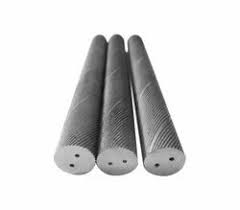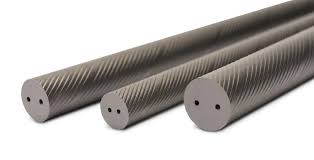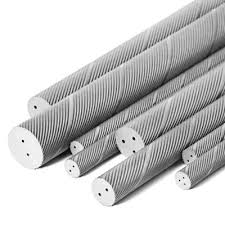In high-performance machining, where temperature control and precision are everything, tooling materials must meet exacting standards. One standout component is the Carbide Rod with Two Helical Coolant Holes – 40°, a specialized rod blank designed for the next generation of cutting tools. This configuration offers a powerful combination of coolant efficiency, tool strength, and design flexibility.
What Is a 40° Two-Helix Coolant Hole Carbide Rod?
A Carbide Rod with Two Helical Coolant Holes features internal spiral-shaped channels, symmetrically placed around the center axis, typically with a helix angle of 40 degrees. These rods are made from solid tungsten carbide, known for its extreme hardness and heat resistance.
The 40° helical design provides aggressive coolant flow with an optimal balance between structural integrity and thermal relief, making them the preferred choice for manufacturing high-performance tools such as:
1. Deep-hole drills
2. Step drills
3. High-speed reamers
4. Milling cutters

Advantages of the 40° Helical Coolant Design
1. Efficient Cooling Under Pressure
The 40° spiral coolant holes create a turbulent flow, increasing heat transfer efficiency and ensuring the coolant reaches the cutting edge quickly, even under high-pressure coolant systems (HPC).
2. Enhanced Chip Evacuation
The spiral geometry actively supports the removal of chips from the machining zone, preventing clogging and contributing to cleaner, more stable machining, especially in deep-hole applications.
3. Greater Tool Core Strength
Compared to rods with straight holes or lower helix angles, the 40° spiral provides an ideal compromise between coolant delivery and mechanical strength. This makes it suitable for aggressive cutting environments.
4. Optimized for High-Speed Cutting
These rods are engineered for operations involving high RPMs and hard materials like stainless steel, Inconel, and titanium—all of which generate extreme heat during machining.
Applications Across Industries
1. Aerospace: Where temperature and precision are critical in tool design.
2. Automotive: For efficient production of powertrain and structural components.
3. Medical Device Manufacturing: In crafting durable and high-precision surgical tools.
4. General Machining: For deep-hole and high-speed applications requiring long tool life.

Material and Manufacturing Notes
These carbide rods are typically manufactured using submicron or ultrafine grain tungsten carbide powders and sintered under strict quality conditions. Features often include:
Uniform helix geometry (40° ± tolerance)
High concentricity and straightness
Mirror-polished outer surface and coolant channels
Optional chamfering or ground surface finish
Advanced processes like hot isostatic pressing (HIP) and ultrasonic inspection are often used to guarantee internal integrity and strength.
Final Thoughts
Overall, carbide rods with two helical coolant holes at a 40° angle are revolutionizing machining performance by offering enhanced cooling, chip evacuation, and durability. Machinists who incorporate these innovative rods into their processes can expect to see improvements in tool life, surface finishes, and overall efficiency. With their advanced design and proven benefits, carbide rods with two helical coolant holes at a 40° angle are setting a new standard for precision and productivity in the machining world.

Helical Coolant Hole Rods: Enhancing Machining Performance
www.diatooling.com
Shanghai Diatooling